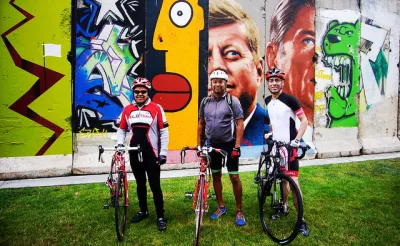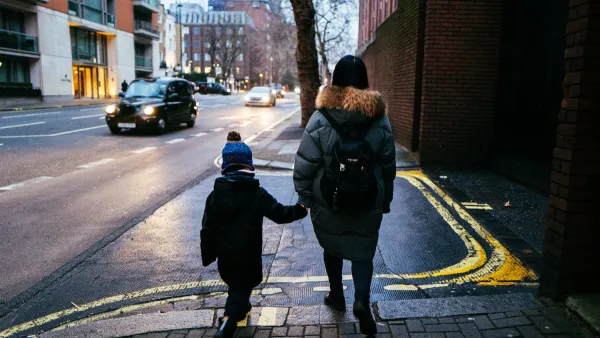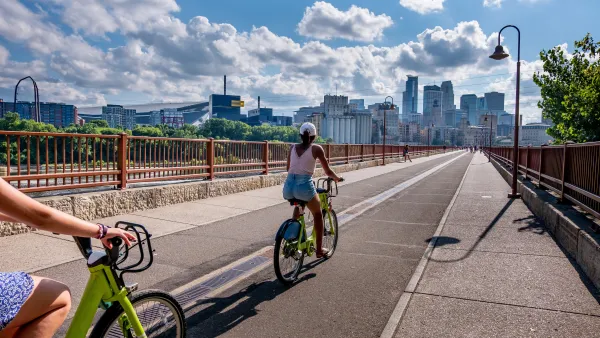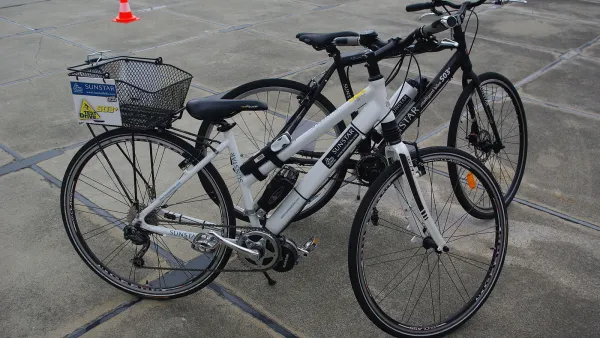A new FHWA report, "Pursuing Equity in Pedestrian and Bicycle Planning" identifies practical ways to achieve social equity by better responding to the active travel needs of currently underserved populations.

The new Federal Highway Administration report, Pursuing Equity in Pedestrian and Bicycle Planning, identifies practical ways to help achieve social equity objectives by examining the travel demands of traditionally underserved populations (low income, minority, older adults, limited English proficiency (LEP) and people with disabilities), and ensuring that pedestrian and bike planning decisions serve those demands.
The report starts with an insightful overview of social equity concepts, including the distinction between equality (treating everybody the same) and equity (responding to people's different needs and abilities), and how these concepts can apply to transportation planning.

The research finds:
- Many traditionally underserved populations often rely on walking and cycling but face significant obstacles in using these modes. For example, many travel by bicycle but are less likely to practice safe bicycling techniques (such as riding with traffic, using lights, and wearing helmets and reflective clothing), and are often forced to ride along roads lacking safe, accessible pedestrian and bicycle facilities.
- Many underserved population groups live where public transit services are limited.
- Many people in the United States, in particular traditionally underserved populations, suffer from problems caused by physical inactivity, which can be addressed through improved access to safe walking and wheeling facilities.
- Women and minorities feel significantly less safe traveling by bicycle than non-minority males in the United States. A majority of women and minorities agreed or strongly agreed that, given more supportive infrastructure (e.g., sidewalks, bike lanes, and separated facilities), they would be much more likely to bicycle for transportation.
- Individuals with limited travel options (including nonmotorized modes) travel less overall, make fewer trips for shopping and socializing; have a harder time applying for and accepting employment; are less likely to access healthy foods, health care, and educational resources; and are more likely to experience social isolation.
The report concludes that pedestrian and bicycle improvements can help reduce transportation inequities. It identifies specific, practical ways to make pedestrian and bicycle planning more responsive to underserved population travel demands, including specific objectives to support social equity goals, new tools for understanding how walking and cycling conditions affect disadvantaged populations' access (such as the number of jobs accessible to disadvantaged groups within an acceptable commute travel time, and how planning decisions would affect this), and more involvement of underserved populations in the planning process. The report also includes examples and case studies of pedestrian and bicycle planning that applies advanced equity analysis.
FULL STORY: Pursuing Equity in Pedestrian and Bicycle Planning

National Parks Layoffs Will Cause Communities to Lose Billions
Thousands of essential park workers were laid off this week, just before the busy spring break season.

Retro-silient?: America’s First “Eco-burb,” The Woodlands Turns 50
A master-planned community north of Houston offers lessons on green infrastructure and resilient design, but falls short of its founder’s lofty affordability and walkability goals.

Delivering for America Plan Will Downgrade Mail Service in at Least 49.5 Percent of Zip Codes
Republican and Democrat lawmakers criticize the plan for its disproportionate negative impact on rural communities.

Test News Post 1
This is a summary

Test News Headline 46
Test for the image on the front page.

Balancing Bombs and Butterflies: How the National Guard Protects a Rare Species
The National Guard at Fort Indiantown Gap uses GIS technology and land management strategies to balance military training with conservation efforts, ensuring the survival of the rare eastern regal fritillary butterfly.
Urban Design for Planners 1: Software Tools
This six-course series explores essential urban design concepts using open source software and equips planners with the tools they need to participate fully in the urban design process.
Planning for Universal Design
Learn the tools for implementing Universal Design in planning regulations.
EMC Planning Group, Inc.
Planetizen
Planetizen
Mpact (formerly Rail~Volution)
Great Falls Development Authority, Inc.
HUDs Office of Policy Development and Research
NYU Wagner Graduate School of Public Service





























